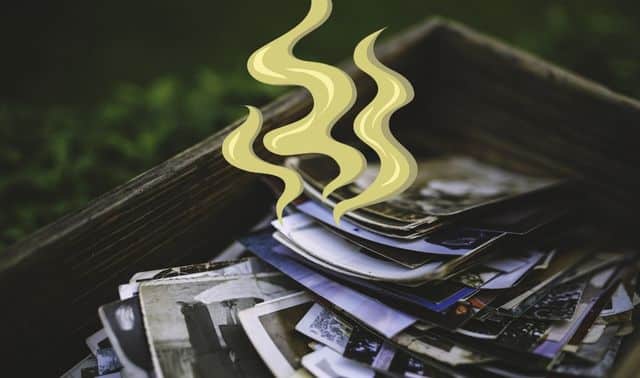Sign up for the Family Tree Newsletter! Plus, you’ll receive our 10 Essential Genealogy Research Forms PDF as a special thank you.
Get Your Free Genealogy Forms
"*" indicates required fields

Throughout the history of photography — beginning with the daguerreotype in the 1840s and continuing today — people have placed photographs in jewelry. Worn by men, women and children, photographic jewelry lends itself to a variety of settings. Women generally select pins, lockets, rings, bracelets and even coat buttons with matching sets of bracelets, earrings and necklaces. Men favor keywinds (used to wind watches), watch fobs, rings, cufflinks, stickpins and coat buttons.
Queen Victoria popularized photographic jewelry as a symbol of mourning when she wore pieces adorned with Prince Albert’s image after his death in 1861. Between 1861 and 1880, photographs appeared in lockets and brooches with swiveling compartments to hold swatches of hair or clothing. (Maddock’s locket contained only the three portraits.)
Most images carried in jewelry are portraits, usually of family members, although young women also wear jewelry with pictures of acquaintances, as friendship tokens. Unfortunately, as with this portrait of the young girl, most images found in jewelry are unidentified. You can identify these images, however, by considering several factors: the type of image, the subject’s clothing and the jewelry setting. Photographers’ imprints generally aren’t present in these pictures. In this example, it’s necessary to rely on costume clues and family information.
Maddock died in 1906, leaving behind two sons and a daughter (Sybil Farmer’s mother). Her husband died two months later, and other family members raised the children. Farmer’s mother inherited the locket when she turned 21, and at some point she placed pictures of her two brothers inside it. When she died, Farmer inherited the locket. The portrait of the young girl probably belonged to Maddock.
This young girl wears the latest fashion for the early 1890s. Her large hat, adorned with silk ribbon, resembles a hat advertised in an 1889 issue of Demorest’s Monthly Magazine. But at that time, children’s hat styles didn’t change dramatically; a St. Louis store advertised a similar hat in 1897. Large bows worn at the neckline also were popular in the 1890s. The girl’s dress appears to have a V-shaped yoke trimmed in lace, although little of her outfit is visible.
The girl looks to be between the ages of 10 and 14. If the photo was taken later in the decade, the girl can’t be Maddock, who would have been 22 in 1897, or her sister Mabel (1878-1904). Yet, even though the girl has light-colored hair, she does resemble Mabel (pictured above left at age 20) in the shape of her eyes, mouth and nose. Mabel’s hair could have darkened as she aged. Without other candidates for identification, it’s likely that this is a photograph of Mabel taken in the early 1890s, although the girl also could be a close relative or friend.
Regardless of who appears in the picture, Farmer’s mother must have cherished the image. Perhaps after losing so many of her relatives as a young child, she decided to preserve this unknown image — because the young girl could have been family.
From the August 2003 Family Tree Magazine




